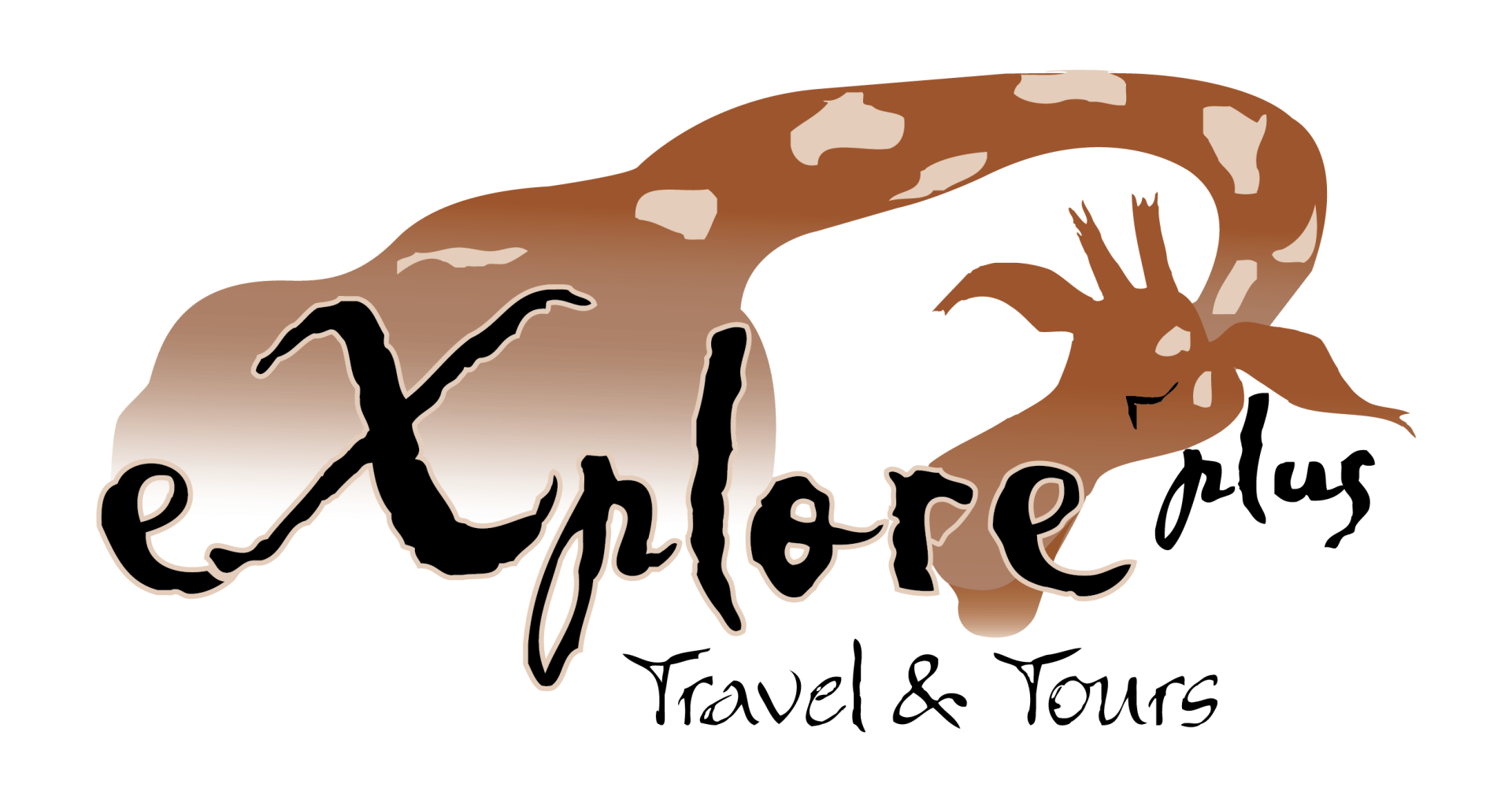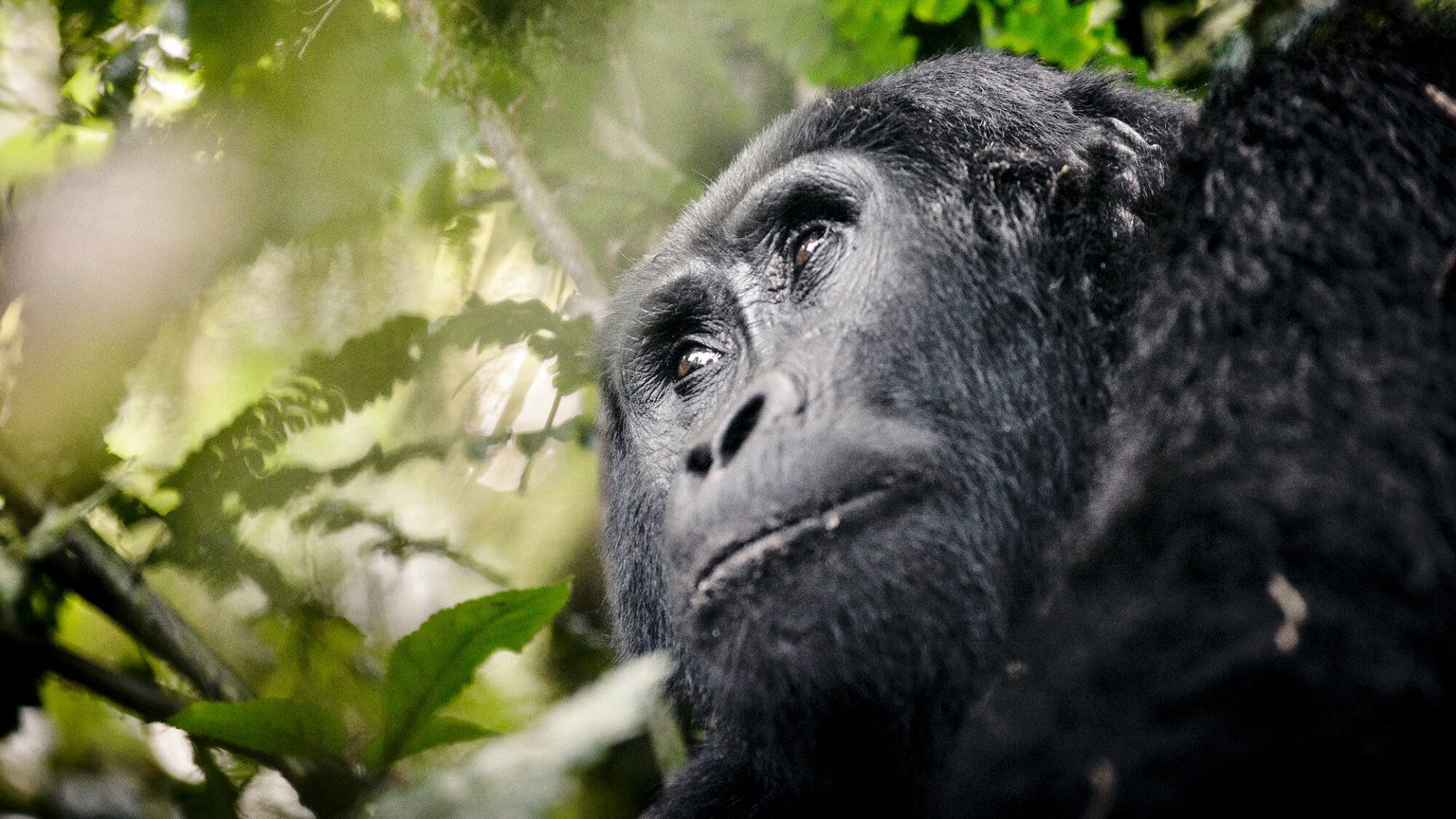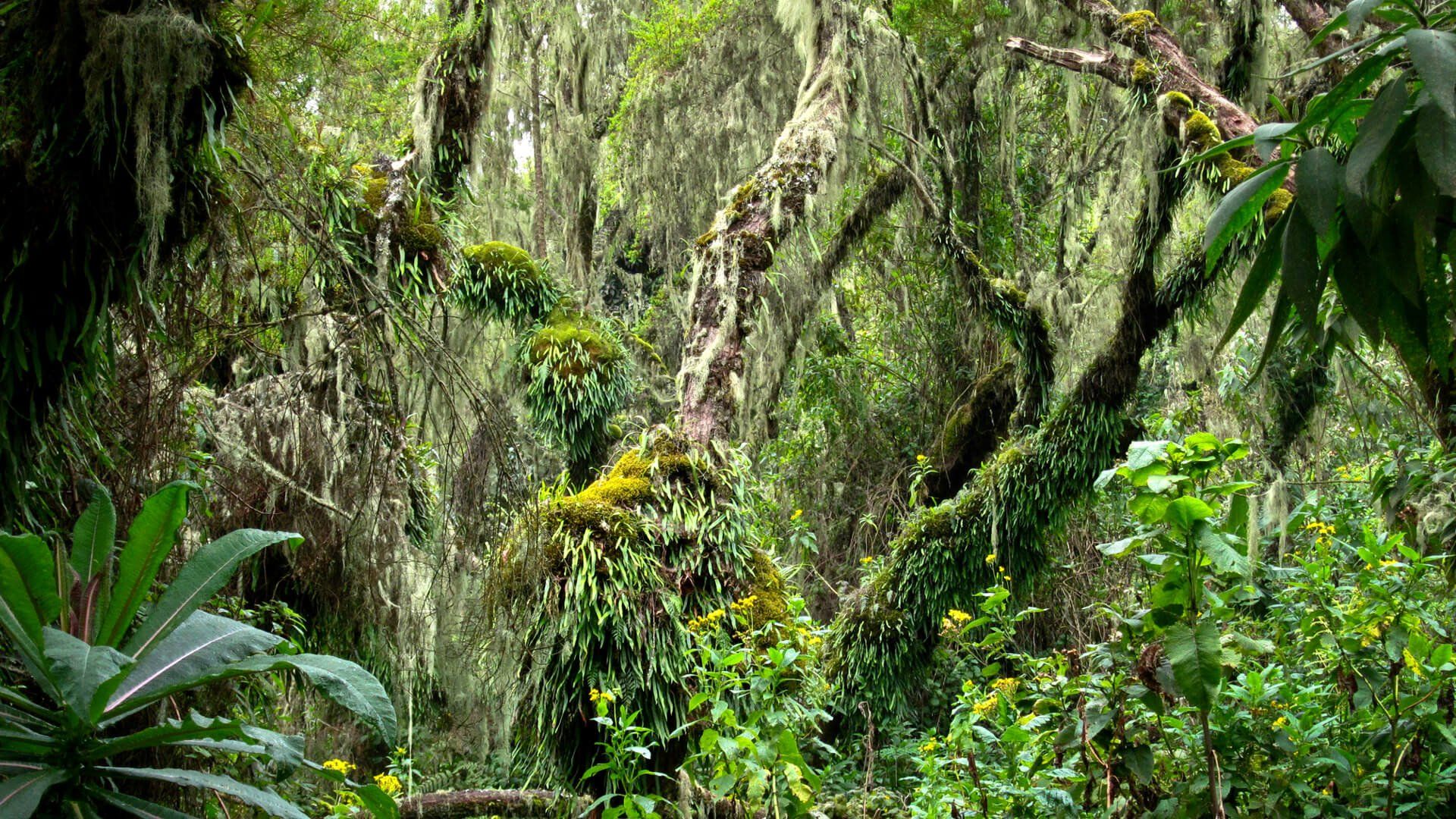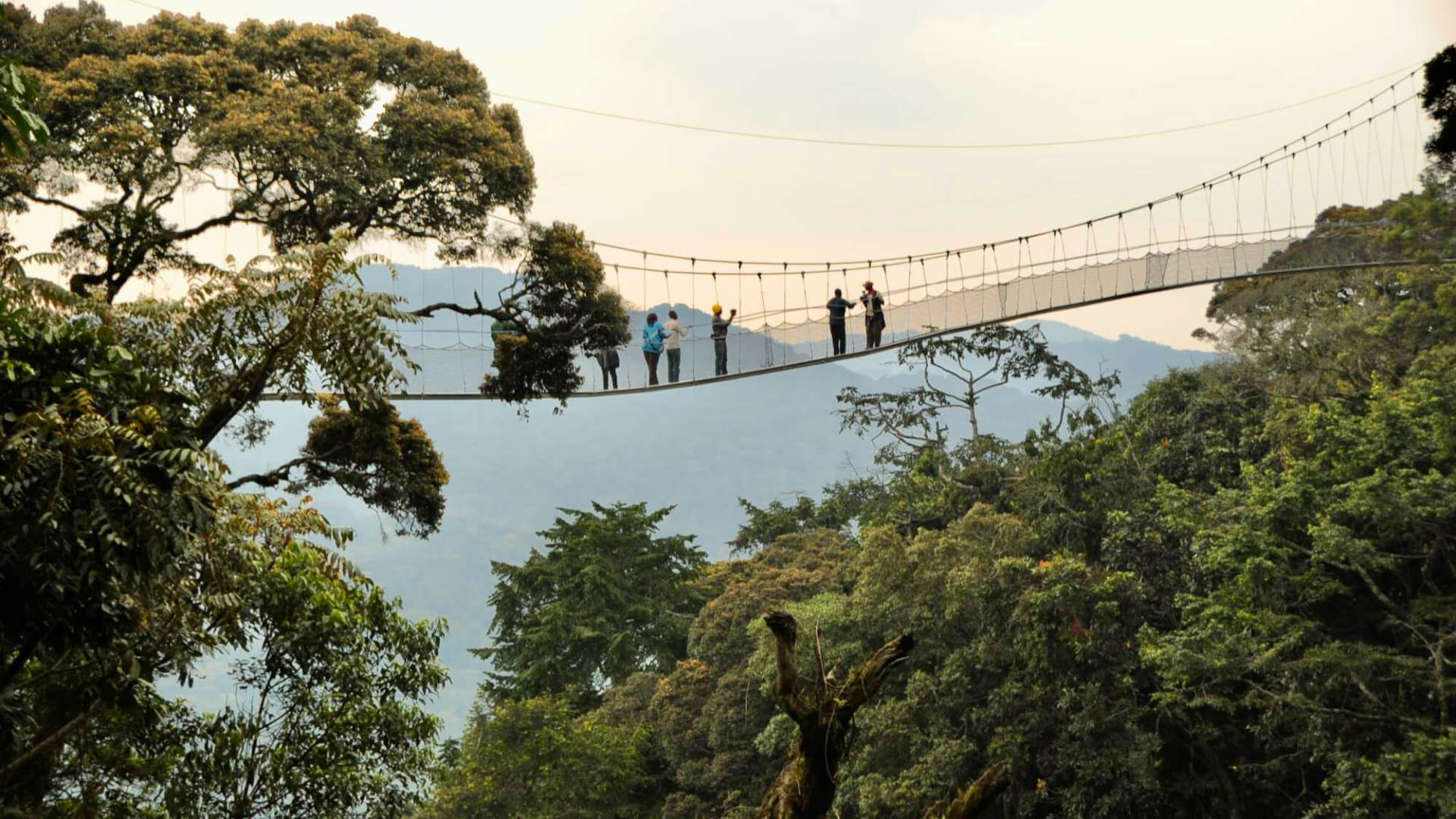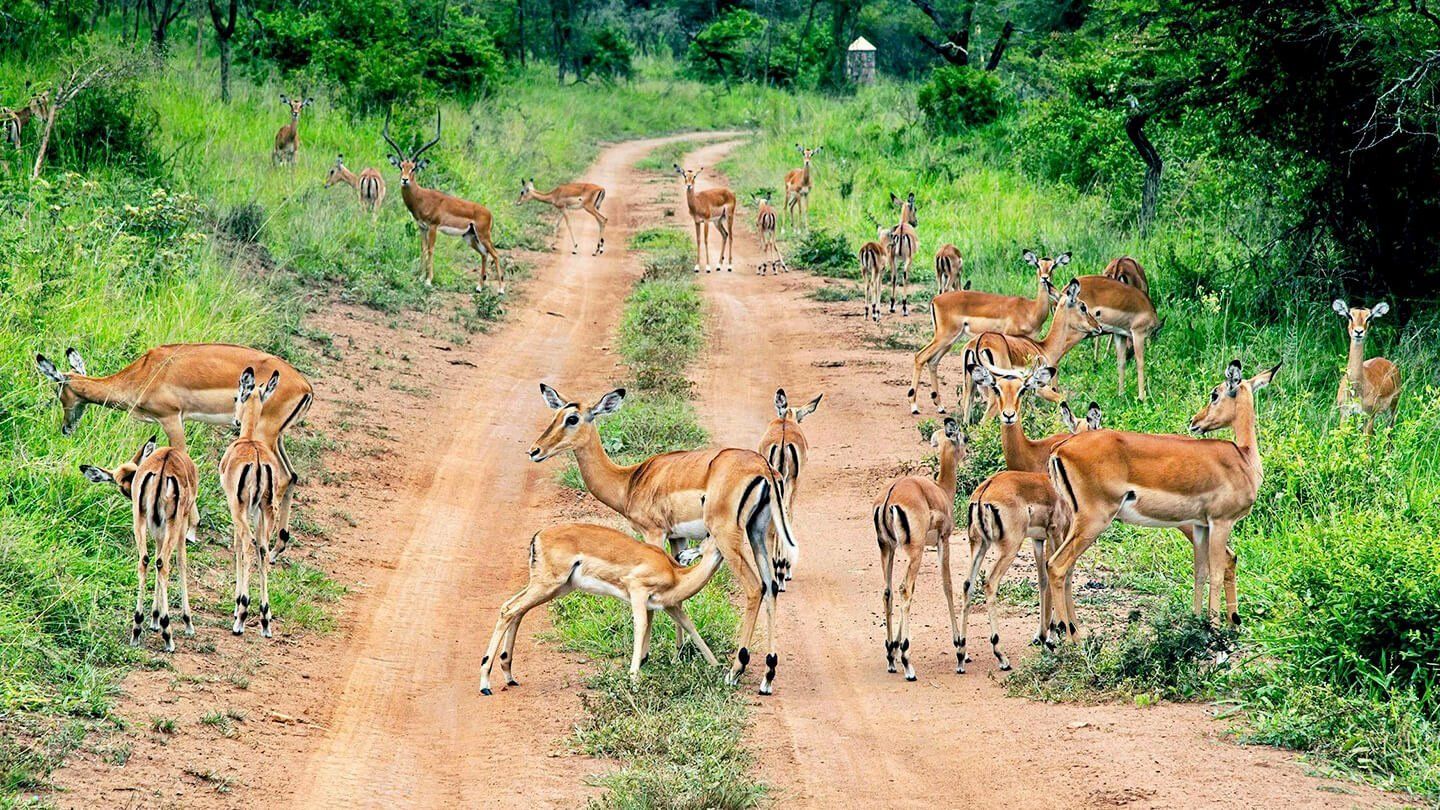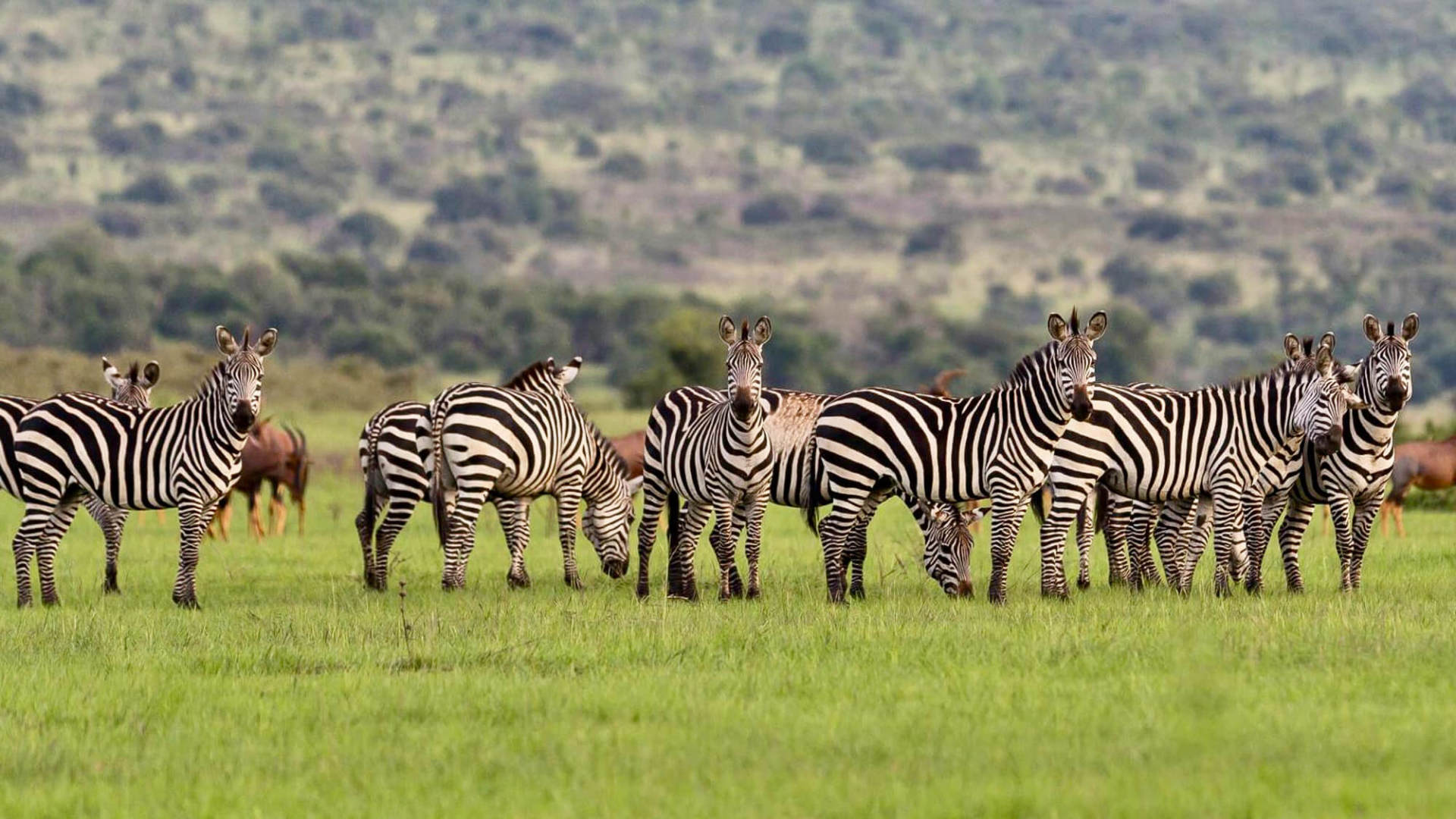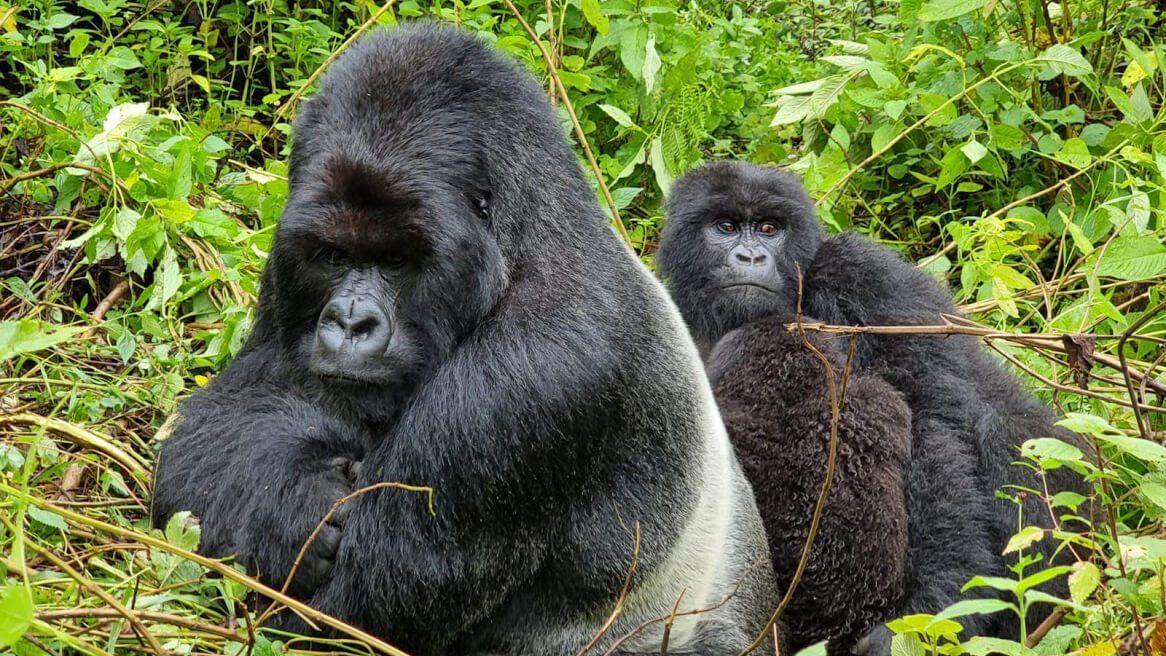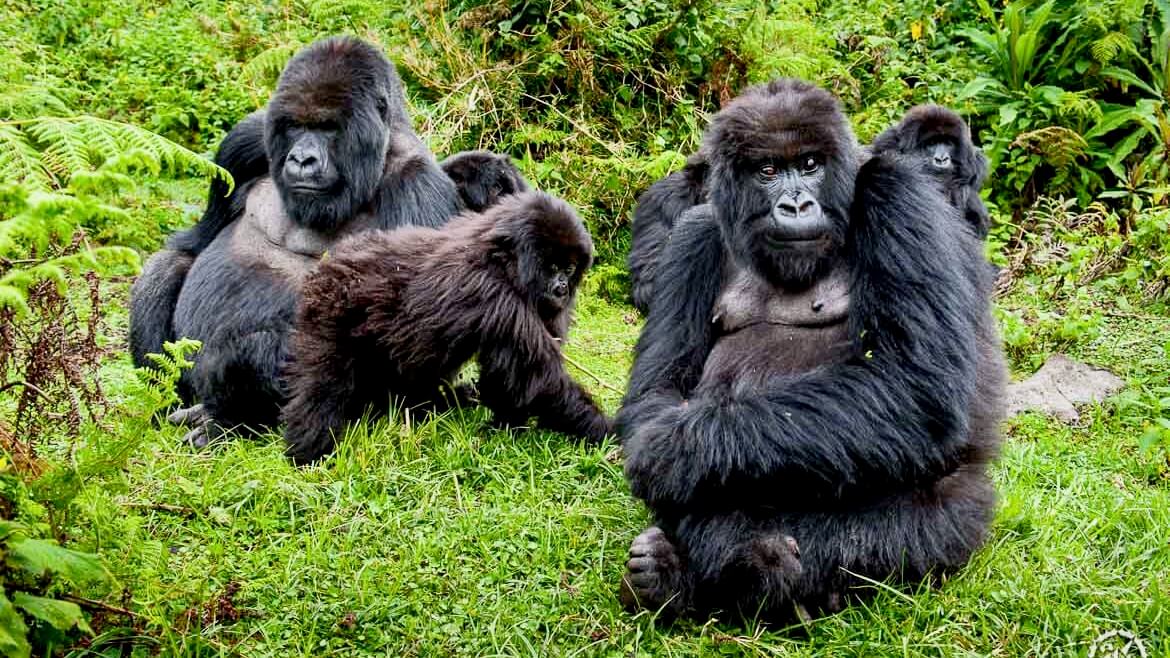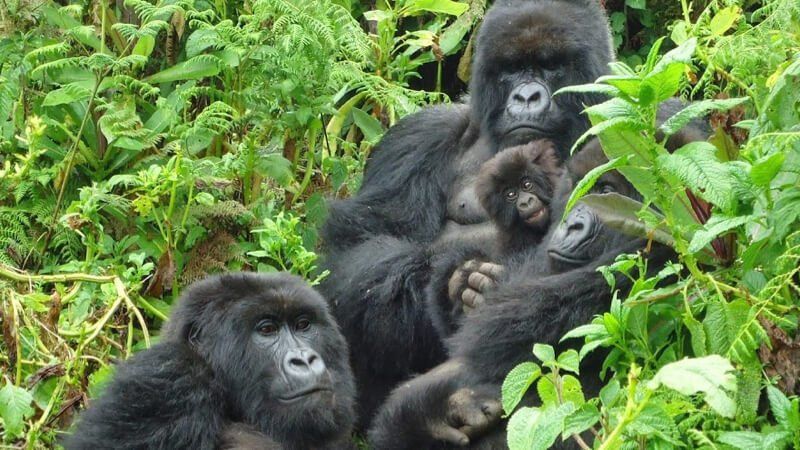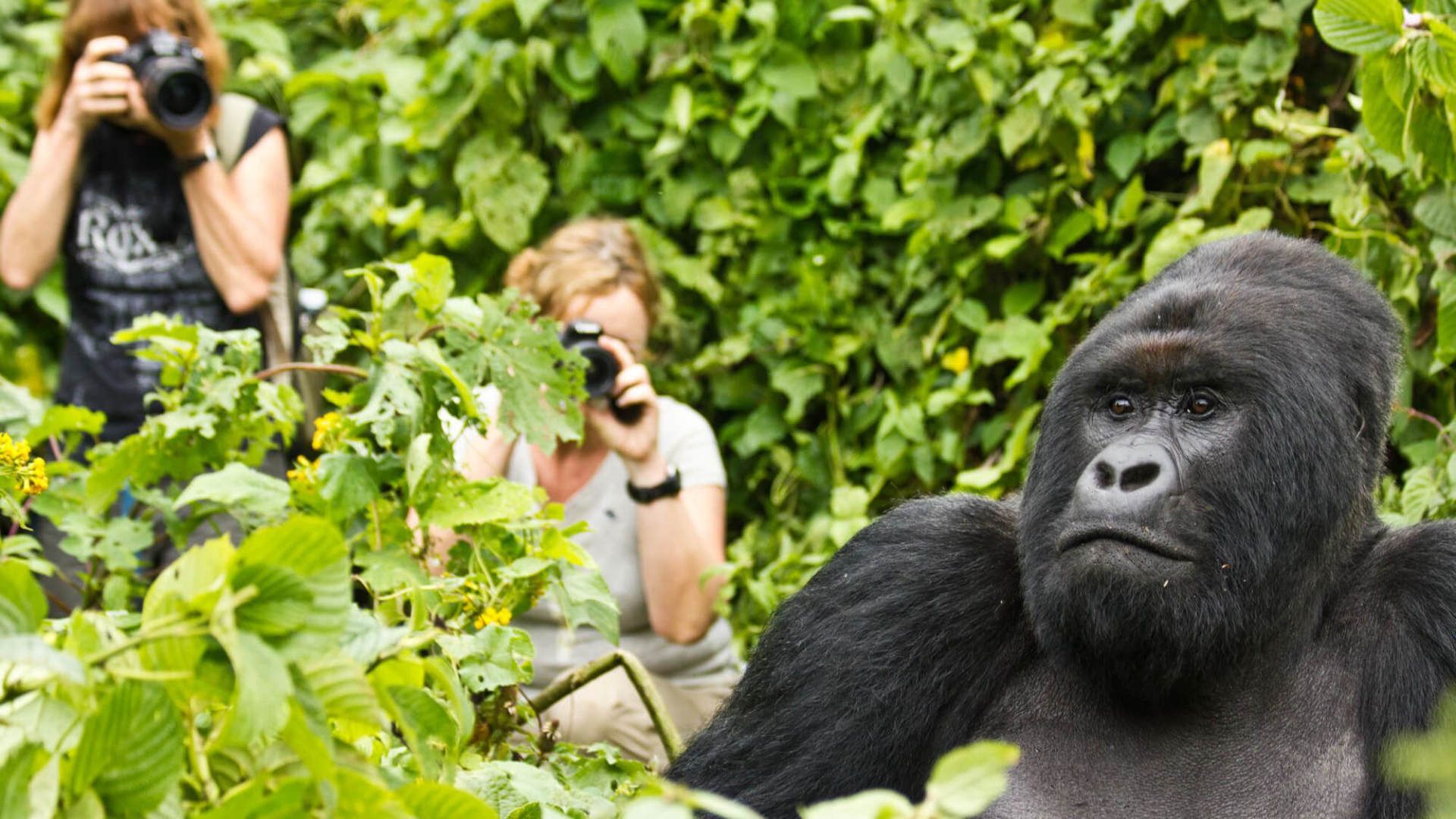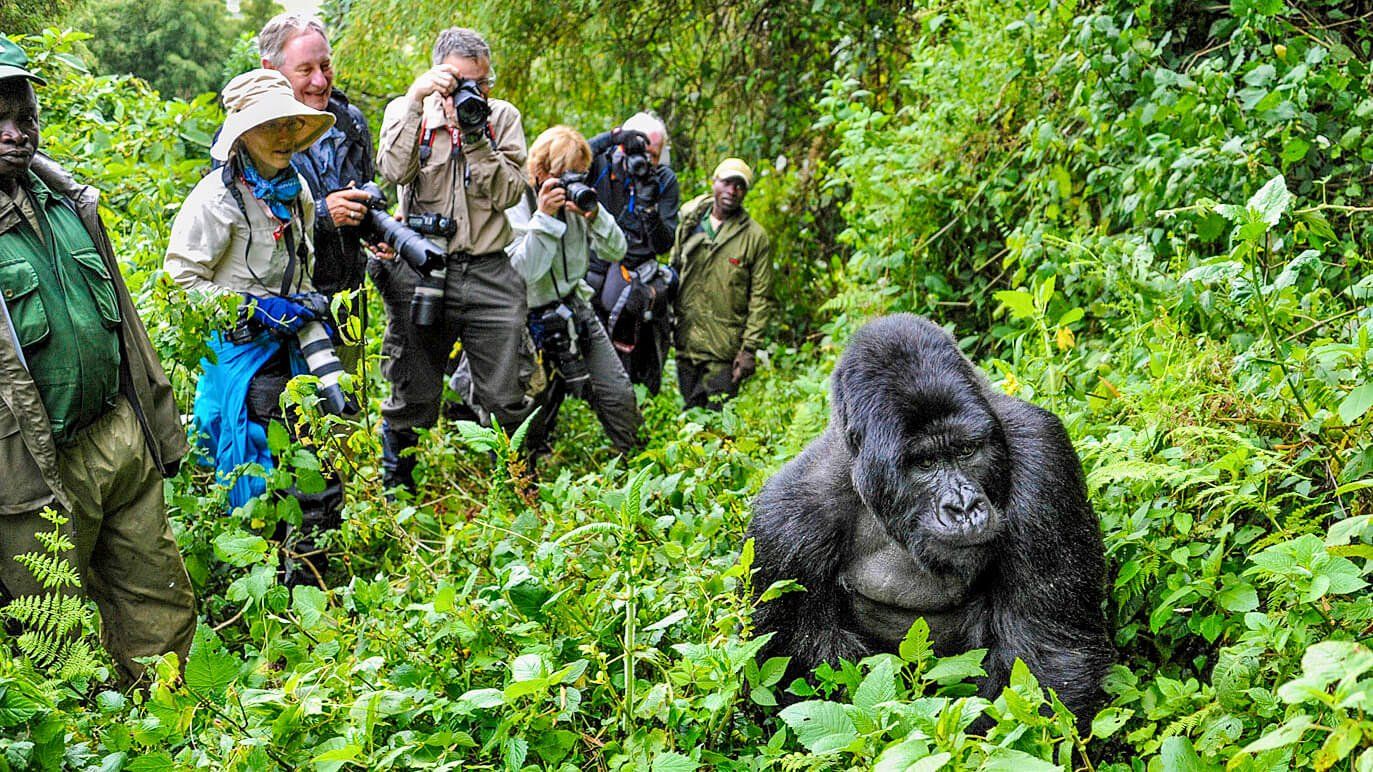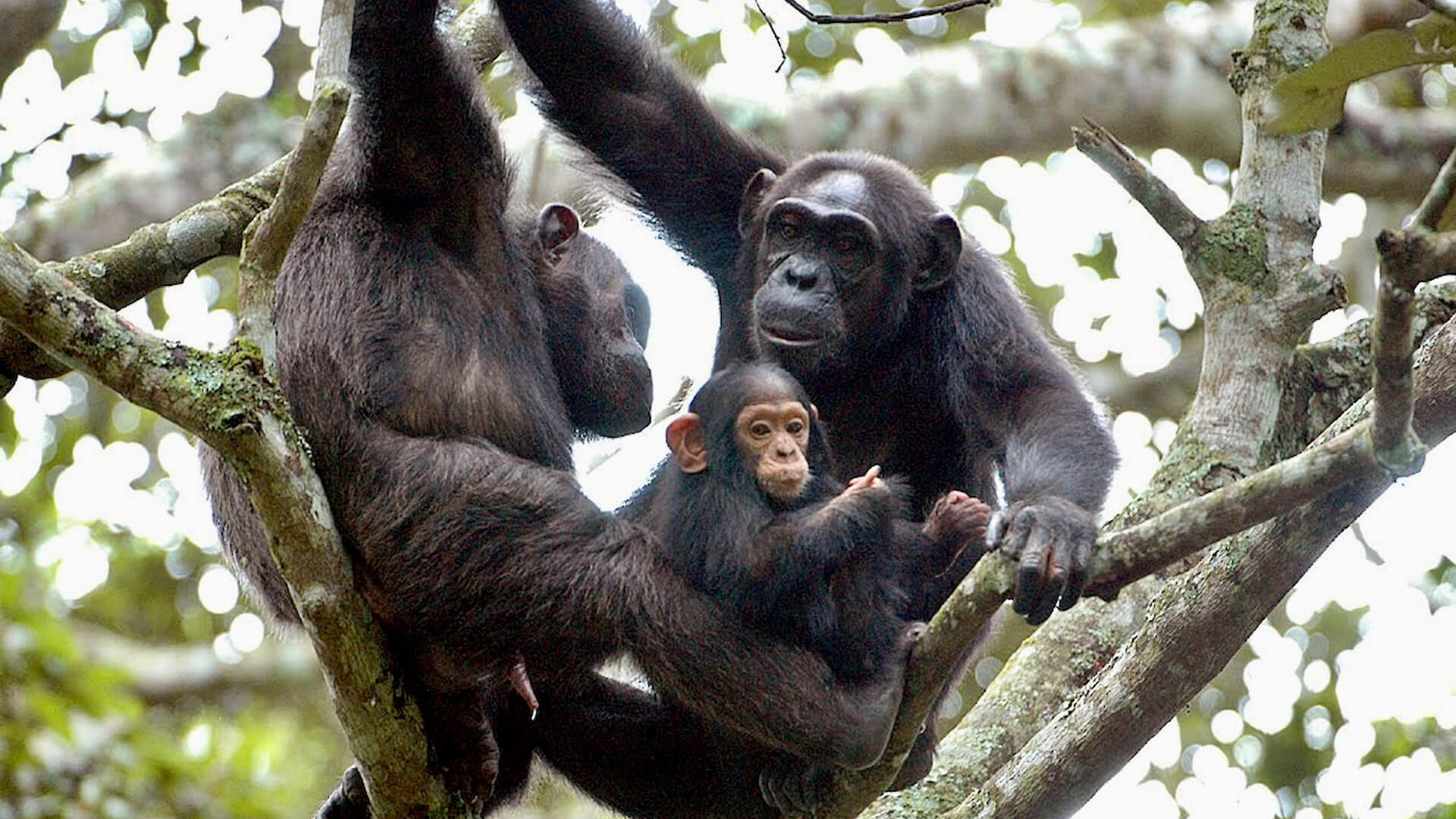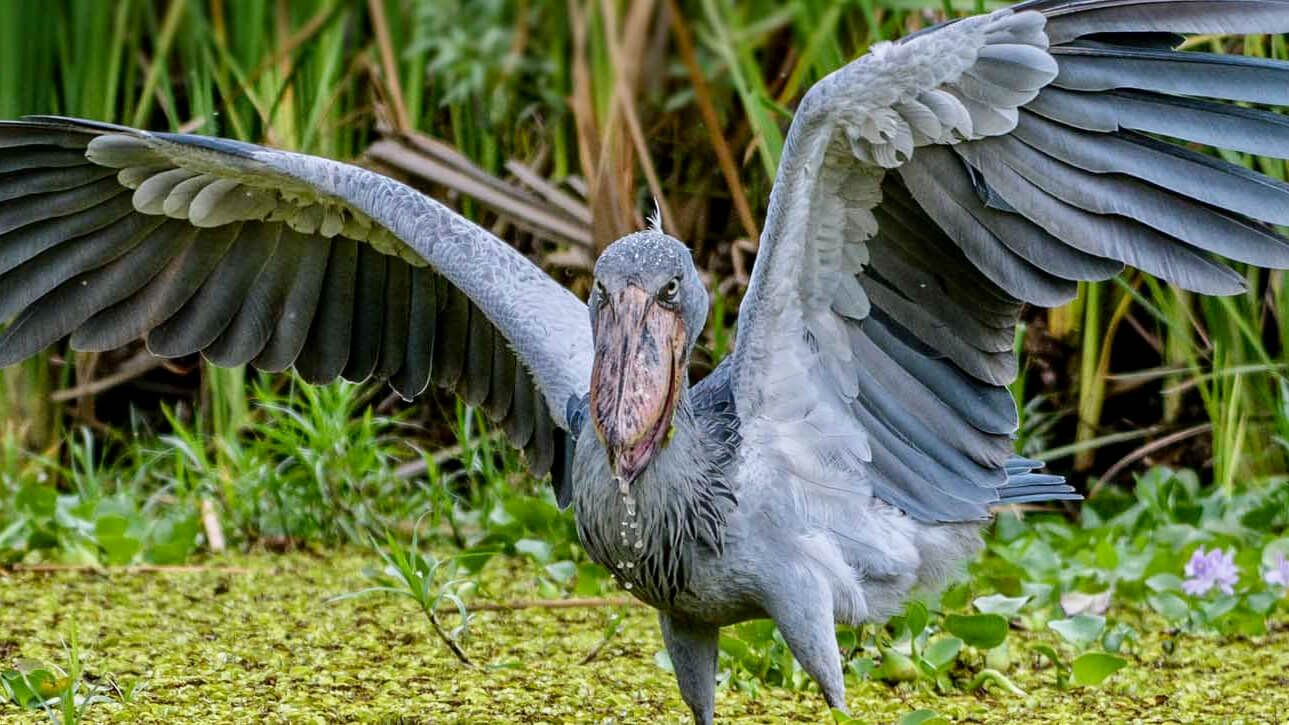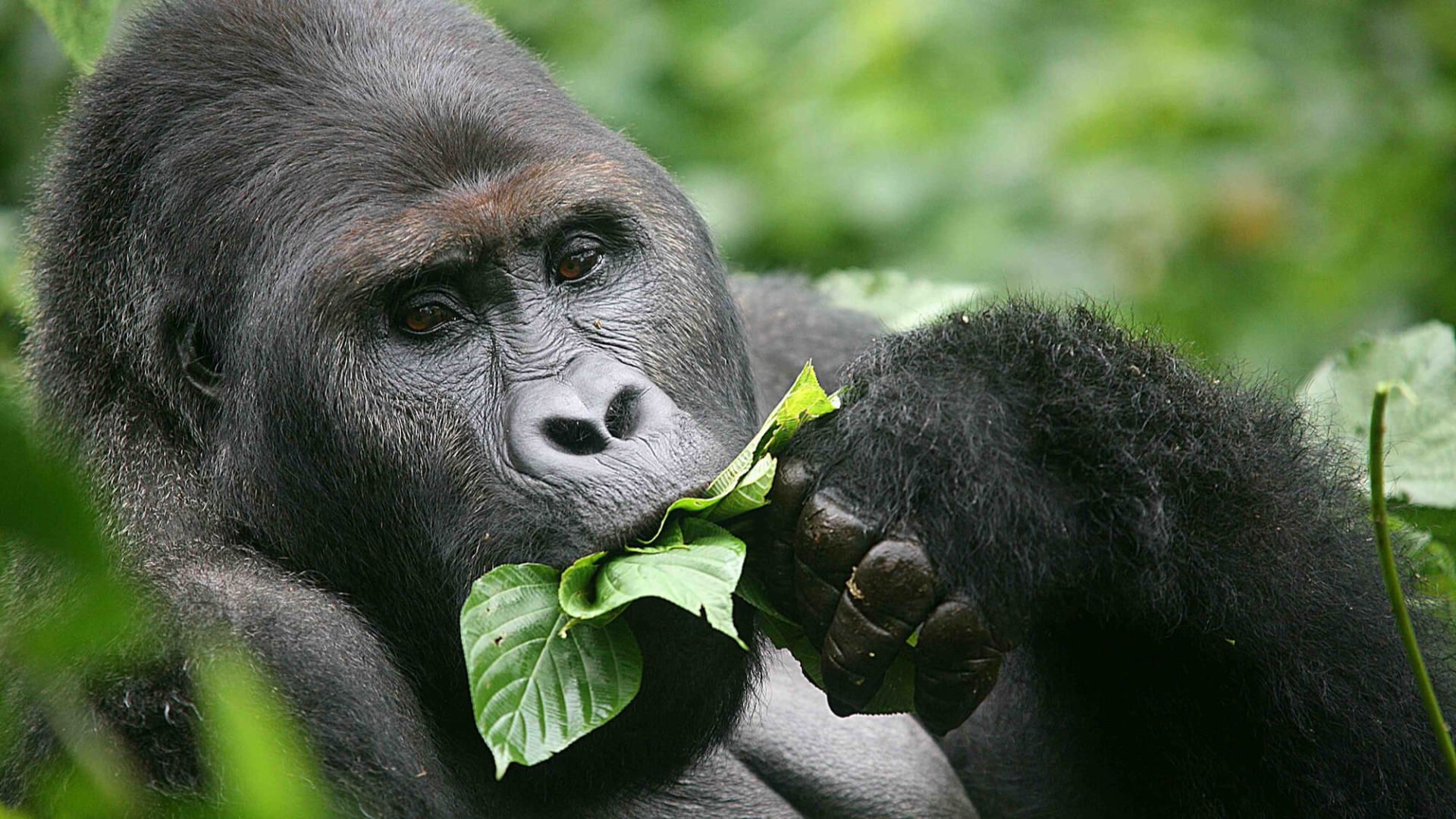Rwanda National Parks
- Volcanoes National Park
Brief profile:
- Covers 330 km²
- Where Dian Fossey carried out her work
- Park includes five of the eight Volcanoes of the Virunga Mountains
Highlights:
- Mountain gorilla trekking
- Golden monkey trekking
- Hiking
- Cultural experience
- Breath-taking scenery
- Bird watching
Volcanoes National Park (“Parc National des Volcans” in French) is part of the big Virunga conservation area and is found in north-western Rwanda. It borders Virunga National Park in the Democratic Republic of Congo and Mgahinga Gorilla National Park in Uganda.
The park is in essence a rainforest and it covers an area of 130 square kilometres. It is best known for being home to the mountain gorilla (Gorilla beringei beringei). In 1967 zoologist Dian Fossey made it her base and she started the Karisoke research centre. It was through her efforts and profound research findings that gorilla poaching decreased and was made illegal.
The Karisimbi mountain is the tallest mountain in the park and its altitude ranges between 2400m and 4507m. The park includes five of the eight Volcanoes of the Virunga Mountains namely: Karisimbi (4507m), Bisoke (3711m), Muhabura (4127m), Gahinga (3474m) and Sabyinyo (3634m). Although the park is well-known for its mountain gorillas, it is also home to mammals like golden monkeys, black-fronted duikers, buffaloes, spotted hyenas and bushbucks. It has 178 recorded bird species with at least 13 species and 16 subspecies endemic to the Virunga and Ruwenzori mountains.
Best Time to Visit:
| Jan | Feb | Mar | Apr | May | Jun | Jul | Aug | Sept | Oct | Nov | Dec |
|---|---|---|---|---|---|---|---|---|---|---|---|
| Very Good | Very Good | Fair | Fair | Good | Very Good | Very Good | Very Good | Very Good | Good | Good | Very Good |
| Jan | Feb | Mar | Apr | May | Jun | Jul | Aug | Sept | Oct | Nov | Dec |
|---|---|---|---|---|---|---|---|---|---|---|---|
| Very Good | Very Good | Fair | Fair | Good | Very Good | Very Good | Very Good | Very Good | Good | Good | Very Good |
| Jan | Feb | Mar | Apr | May | Jun |
|---|---|---|---|---|---|
| Very Good | Very Good | Fair | Fair | Good | Very Good |
| Jul | Aug | Sept | Oct | Nov | Dec |
|---|---|---|---|---|---|
| Very Good | Very Good | Very Good | Good | Good | Very Good |
- Nyungwe Forest National Park
Brief profile:
- Covering over 1000 km²
- Probably the best preserved rainforest in the mountains throughout Central Africa
- 275 Bird species, 25 of which are endemic to Rwanda
Highlights:
- The park contains 13 different primate species (25% of Africa's total)
- Birding
- Chimpanzee’s – with 500 living in the park
- Angolan Colobus Monkeys with “super groups” of over 350 individuals in a group
- Sky walk
Set in southwest Rwanda, Nyungwe is one of Africa’s oldest forests. It is a rainforest in its purest sense with regular rainfalls of up to 2000 mm per annum. Absolutely teeming with wildlife, the national park is a great destination to include in a safari, especially if you like primates. It is known as one of the richest areas in Africa when it comes to the amount of endemic species and stunning biodiversity that it offers. Whilst not guaranteed, it is not uncommon to spot troops of more than 300 Angolan colobus monkeys swinging through the trees!
It is estimated that the forest has about 500 chimpanzees. Other primates include the L'Hoest’s monkeys, silver monkeys, golden monkeys, olive baboons, vervet monkeys, several species of bushbabies, grey-cheeked mangabeys and red-tailed monkeys.
There is an equally rich variety of flora in the forest, with over 100 orchid species and more than 200 types of trees. The area has the greatest concentration and variety of birdlife in Rwanda, with nearly 300 species recorded. This includes iridescent sunbirds, giant hornbills, the extravagant blue turaco and many other species endemic to the Albertine rift.
Best Time to Visit:
| Jan | Feb | Mar | Apr | May | Jun | Jul | Aug | Sept | Oct | Nov | Dec |
|---|---|---|---|---|---|---|---|---|---|---|---|
| Fair | Fair | Fair | Fair | Fair | Very Good | Very Good | Very Good | Very Good | Fair | Fair | Fair |
| Jan | Feb | Mar | Apr | May | Jun |
|---|---|---|---|---|---|
| Fair | Fair | Fair | Fair | Fair | Very Good |
| Jan | Feb | Mar | Apr | May | Jun | Jul | Aug | Sept | Oct | Nov | Dec |
|---|---|---|---|---|---|---|---|---|---|---|---|
| Fair | Fair | Fair | Fair | Fair | Very Good | Very Good | Very Good | Very Good | Fair | Fair | Fair |
| Jul | Aug | Sept | Oct | Nov | Dec |
|---|---|---|---|---|---|
| Very Good | Very Good | Very Good | Fair | Fair | Fair |
- Akagera National Park
Brief profile:
- Covering 1,122 km2
- Complex system of lakes and linking papyrus swamps makes up over a third of the park
- Central Africa's largest protected wetland
Highlights:
- Big Five safari destination
- Boat trips on Lake Ihema offer a fabulous introduction to the park’s aquatic fauna
- Incredible birding with nearly 500 bird species in the park, including the elusive shoebill
Hugging Rwanda’s eastern border with Tanzania, Akagera National Park covers about 1120km² and is one of Africa’s oldest national parks. The north of Akagera is mostly fairly low-lying grasslands and savannah plains. To the west are rolling hills and valleys more typical of Rwandan countryside while to the east, the Akagera River feeds into a series of lakes, marshes and papyrus swamps that constitute central and eastern Africa’s largest protected wetlands. Safaris within Akagera National Park offer visitors the opportunity to see a broad range of wildlife including herds of elephants and buffalo, leopards and lions. The plains are teeming with over a dozen species of antelope (including impala, oribi, bushbuck and the large Cape eland) as well as zebras and giraffes. The waterways are dominated by hippos and crocodiles. It is a bird-lovers paradise as many rare species like the endangered papyrus gonolek, the shoebill stork and the majestic fish eagle are attracted to the unique marshland. You might even be treated to seeing large flocks of water birds, the endangered papyrus gonolek and the shoebill stork.
Best Time to Visit:
| Jan | Feb | Mar | Apr | May | Jun |
|---|---|---|---|---|---|
| Very Good | Very Good | Fair | Fair | Good | Very Good |
| Jul | Aug | Sept | Oct | Nov | Dec |
|---|---|---|---|---|---|
| Very Good | Very Good | Very Good | Good | Good | Very Good |
| Jan | Feb | Mar | Apr | May | Jun | Jul | Aug | Sept | Oct | Nov | Dec |
|---|---|---|---|---|---|---|---|---|---|---|---|
| Very Good | Very Good | Fair | Fair | Good | Very Good | Very Good | Very Good | Very Good | Good | Good | Very Good |
| Jan | Feb | Mar | Apr | May | Jun | Jul | Aug | Sept | Oct | Nov | Dec |
|---|---|---|---|---|---|---|---|---|---|---|---|
| Very Good | Very Good | Fair | Fair | Good | Very Good | Very Good | Very Good | Very Good | Good | Good | Very good |
-
SPECIAL - RWANDA GORILLA TREKKING
VIEW ITINERARYGROUP SAFARI
DISCOUNTED GORILLA
PERMIT RATE!
4 days / 3 nights
Highlights: Gorilla Trekking in Volcanoes National Park
Departure dates: 22 May / 28 May / 27 Nov & 14 Dec 2024
-
UGANDA GORILLA TREKKING
VIEW ITINERARYGROUP SAFARI
4 days / 3 nights
Highlights: Gorilla Trekking in Bwindi NP
Date: Aug / Oct 2023
-
RWANDA & UGANDA GORILLA TREKKING
VIEW ITINERARYGROUP SAFARI
4 days / 3 nights
Hightlighs: Kigali & Gorilla Trekking in Bwindi NP
Date: Jun / Jul / Sept 2023
-
RWANDA GORILLA & CHIMPANZEE SAFARI
VIEW ITINERARY7 days / 6 nights
Highlights: Gorilla & Chimpanzee Trekking
Date: Private Safari
-
UGANDA GORILLA & CHIMPANZEE TREKKING
VIEW ITINERARYGROUP SAFARI
9 Days / 8 Nights
Highlights: Gorilla & Chimpanzee Trekking
Date: 21-29 September 2024
-
BEST OF UGANDA
VIEW ITINERARY10 Days / 9 Nights
Highlights: Murchison Falls / Chimpanzee and Gorilla Trekking
Date: Private Safari
-
BIRDING, CHIMPANZEE & GORILLA SAFARI
VIEW ITINERARY10 Days / 9 Night
Highlights: Mabamba Swamp / Semliki / Kibale NP / Bwindi NP
Date: Private Safari
-
MOUNTAIN & LOWLAND GORILLA SAFARI
VIEW ITINERARY8 Days / 7 Nights
Highlights: Mountain Gorilla, Chimpanzee & Eastern Lowland Gorilla Trekking
Date: Private Safari
What Our Clients Say About Our Safaris & Tours
SIGN UP FOR OUR NEWSLETTER
Africa is calling – Sign up to our newsletter today!Get exclusive access to the latest on exclusive offers, getaways and travel inspiration.
Contact Us
We will get back to you as soon as possible
Please try again later
Copyright © 2023 Digital Zoo Website Design Company - All Rights Reserved
Domain Registration
|
Email Address
|
Website Design
|
Graphic Design
|
Social Media Management
|
Search Engine Optimization
|
Online Marketing
|
Web App Developer
All Rights Reserved | Explore Plus Travel & Tours
All Rights Reserved | Explore Plus Travel & Tours
